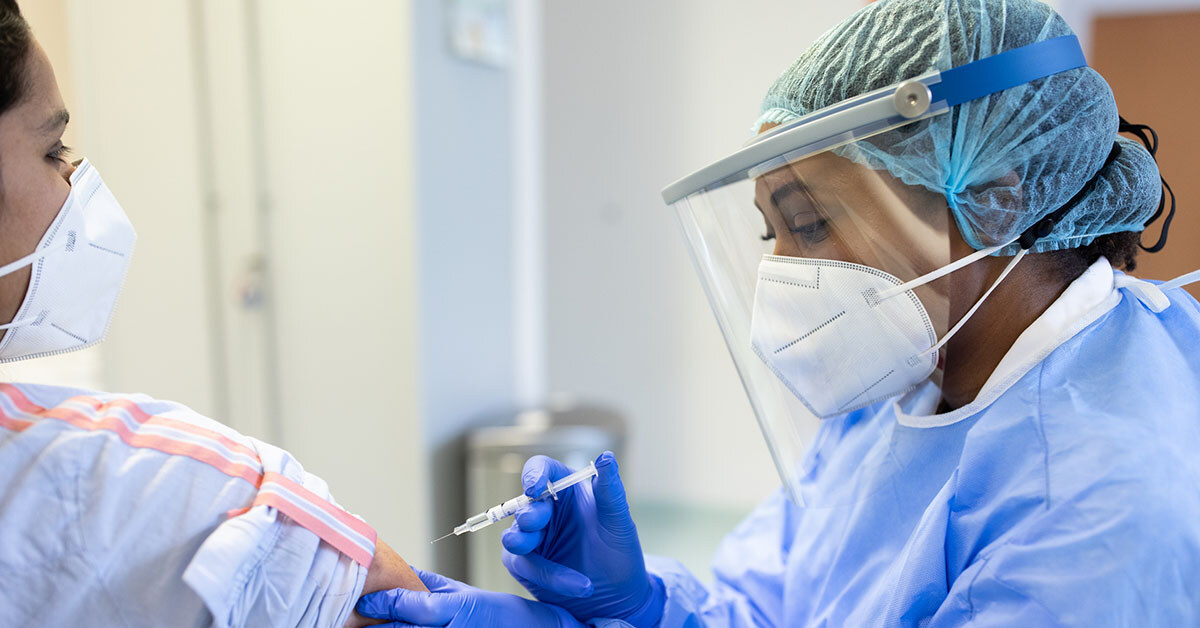Workplace Vaccinations: Top 10 Lessons Learned from Administering COVID Vaccines
March 25th, 2021 | 3 min. read
By Terry Layman

As of the end of March, 14% of the U.S. population had been fully vaccinated against COVID. As eligibility opens up to more and more citizens, administering workplace vaccinations has become a more popular option for some employers. Marathon Health, the trusted worksite health partner for hundreds of employers nationwide, has helped facilitate COVID workplace vaccinations for thousands of employees through its partnership with clients.
Here are our top 10 lessons learned from vaccinating employees at work:
1. Form a Cross-Functional Employer Vaccination Planning Team
- There’s a lot to consider – and a lot to get right – when planning a vaccination event. Make the planning collaborative and include a wide array of perspectives and expertise, such as HR, medical personnel, procurement, logistics, security if needed.
2. Understand Your State Requirements for COVID Workplace Vaccinations
- Employer and health centers both have to apply to administer the vaccine. There are two ways that the onsite health center can assist in administering the vaccine. One way is if the client applies and receives it in which the clinic would assist with administration and the client is the agent. If the clinic applies and receives the vaccine the clinic is the agent. The agent is the entity responsible for storage, administration, reporting etc.
- States have created their own prioritization scale on who is eligible and when – some use A/B/C/D some 1/2/3/4 and each slots people differently
- How to administer – some states do not allow you to administer via a closed pod, which means if you’re accepted, you have to be willing to vaccinate the general population. If you’re unwilling or unable to vaccinate the general population, it’s critical that you understand this requirement at the very beginning of the process. Some of Marathon Health’s clients have strict security protocols, for example, and no one other than employees are allowed to be onsite.
- Who can administer – some states don’t allow medical assistants to administer; a few have required a health provider
- Make sure as an employer you understand vaccine mandates and exemptions.
3. Include Adequate Space to Administer the COVID Vaccine at Work
- Make sure you meet social distancing requirements
- Offer a place to check in
- Have a location where you plan to administer the COVID Vaccine
- Include a place to recover/be monitored
- Provide enough staff to man each of those stations
4. Build a Budget
- The vaccine itself is free and often comes with the necessary personal protective equipment (PPE)
- Understand their could be extra costs for equipment like epi pens, oxygen, oral antihistamines, and temperature monitoring devices like cloud monitoring to ensure adequate temperature storage
- Your health center might require extra staffing to administer the population which could carry extra cost in the form of headcount and extra PPE
5. Have a Plan for All Three COVID Vaccines
- Each vaccine has a different shelf life
- The dose count per vial varies
- Some require temperature regulated storage
- Days between dose 1 and 2 are different (J&J not applicable)

6. Name a Workplace COVID Vaccine Coordinator
- This person will serve as the day-to-day point person for local and state health departments who reach out with questions and/or additional requirements that need to be executed
- Having a dedicated person to manage this will ensure that there is consistency in information and that multiple people aren’t being hit up with the same questions
7. Identify a Trusted Team Member to Field Questions/Concerns
- Many in your population might have concerns and be scared about receiving the vaccine
8. Build in Role Redundancy to Your COVID Vaccine Schedule
- Don’t do everyone in Plant 1 or your entire cafeteria staff on the same day for example – if some are impacted with side effects, you could wipe out an entire team
- Consider shift schedules when you plan for workplace COVID vaccinations
- Schedule people at the end of their shift so they can go home after the monitoring phase is complete. If possible, allow office staff to work from home post monitoring
9. Build a Backup List of Interested Employees
- No-shows/call offs should be expected and you don’t want to waste the doses – have a back-up list of people who are ready and available to fill the spot quickly
10. Document a COVID Workplace Vaccination Plan and Stick to It
- This isn’t an easy planning process
- Gather subject matter experts from the beginning, listen to science, know your population, and put the best plan in place possible
- Don’t let people come in at the 11th hour who weren’t close the planning throw wrenches – they’ll try but stick to your plan
Check out our 6-step process for how to administer a vaccine clinic at your worksite.